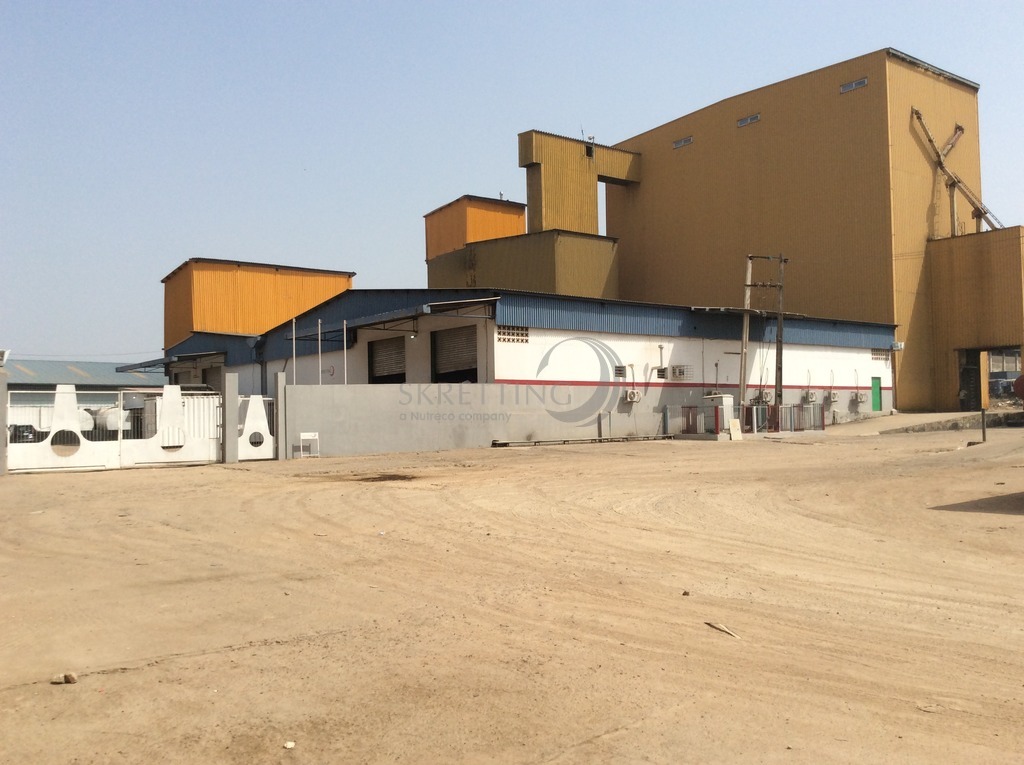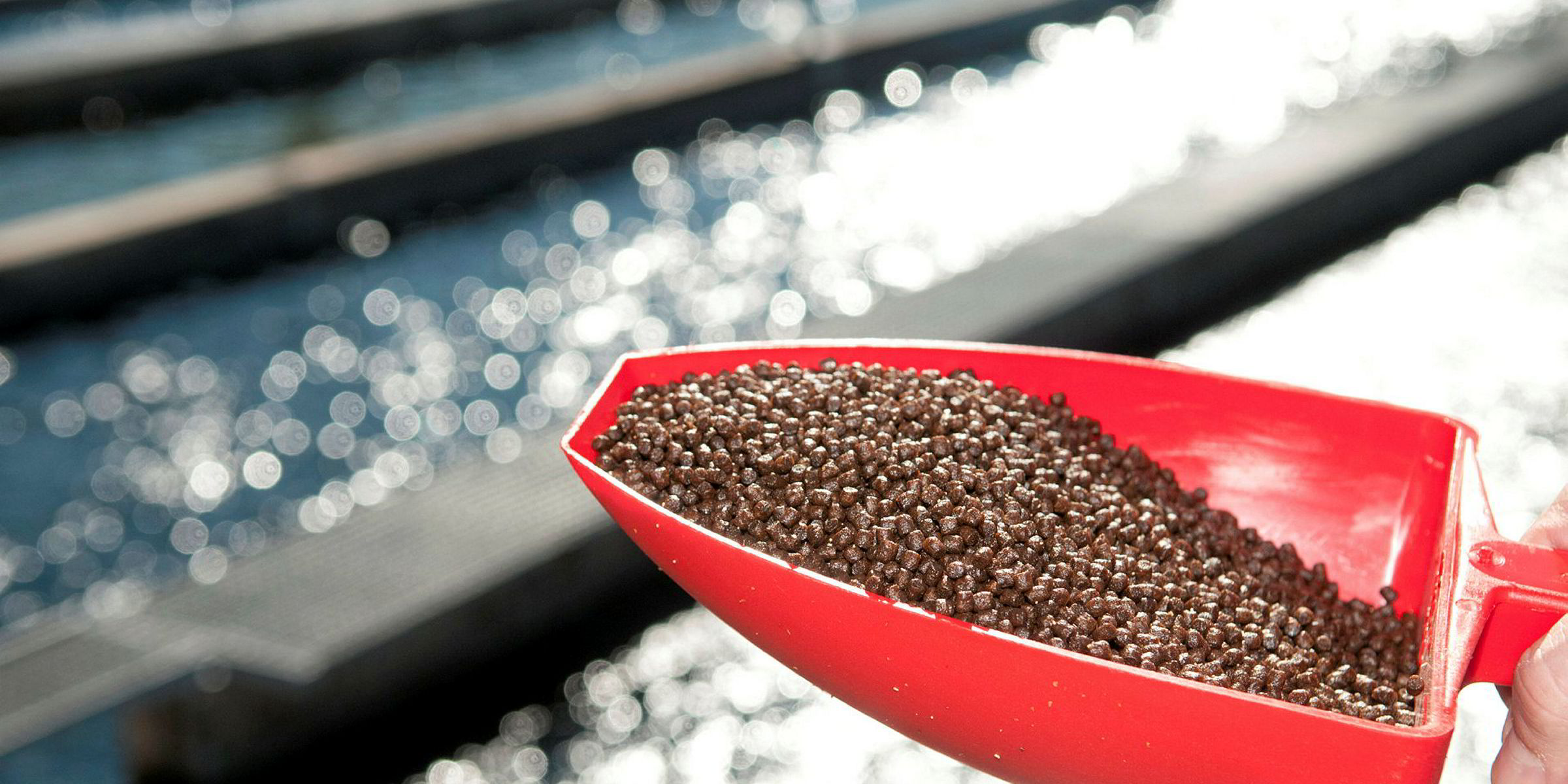Fish farmers must understand the major impact of fish feed expenses, crucial when raising African catfish. Managing these costs is vital for success and sustainability. About 70-80% of the total cost of raising fish is attributed to feed, making feed cost reduction a top priority. Some entering fish farming draw on poultry industry knowledge, creating their own feed with locally purchased concentrates. However, this method may not directly apply to the aquaculture industry.
Fish feed differs from poultry feed; it can’t be thrown into water as mash, causing pollution. Unlike poultry, fish feed requires pelleting, not a mash.
Poultry feed primarily consists of vegetable-based ingredients with a limited inclusion of fish meal. In contrast, fish feed requires a more abundant supply of animal protein, often a limiting factor in its production, to support the desired growth of the fish.

Additionally, catfish being a carnivorous species, can only thrive on highly digestible ingredients. This can be compared to a lion eating fresh meat and a cow grazing on grass. A catfish’s digestive tract, like a lion’s, contrasts with a cow’s rumen, suited for high-fiber digestion.
Additionally, catfish feed production requires diverse raw materials and advanced machinery to craft a complete, balanced diet for fish. The complexity involved sets it apart from the poultry business in terms of feed production requirements.
Specifications of a high quality catfish feed
A good quality catfish feed should meet the following specifications:
- Well-balanced ration. The feed should contain a minimum of 40% crude protein and 10% fat to provide the necessary nutrients for the catfish’s growth and development.
- Effective processing/milling. Proper processing and milling enhance ingredient digestibility and stability, ensuring catfish easily absorb the nutrients for optimal growth.
- Moisture content. The moisture content of the feed should not exceed 10% to prevent fungal infestation and maintain the feed’s freshness and quality.
- Uniformity of feed size. Different stages of catfish require varying sizes of feed with specific nutritional compositions. Ensuring uniformity in feed size helps cater to the nutritional needs of the catfish at each growth stage.

Essential components of a well-equipped feed mill
Necessary components of a good feed mill include:
- Well-structured building. The mill should be designed with consideration for weather conditions, ensuring a suitable environment for efficient production.
- Air-conditioned store. An air-conditioned storage area for raw materials and feed concentrates helps maintain their quality and prevent spoilage.
- Intake bunker with weighing device. This allows for efficient handling and accurate measurement of incoming raw materials.
- Hammer mill. Used for grinding and processing raw materials into smaller particles, increasing digestibility.
- Mixer. To blend different ingredients and ensure a homogeneous mix of nutrients.
- Pelletizing machine or extruder. Conditioning the feed with steam before pelletizing enhances its palatability and nutritional value.
- Dryer and cooler. These machines are essential for removing excess moisture and cooling the pellets, ensuring longer shelf life and stability.
- Fat coater. Recommended for producing high-quality catfish feeds by adding fat and improving palatability.
- Bagging and proper storage. Ensuring the finished products are adequately packaged and stored to maintain their quality.
- Standard Operating Procedures (SOPs). Implementing quality control measures, such as Hazard Analysis and Critical Control Points (HACCP), and conducting regular testing of microbial and aflatoxin levels in a laboratory.
While these components are vital, maintaining all the machines in good condition and ensuring personnel have the necessary technical expertise can be challenging.
Obtaining catfish feed ingredients can be difficult
Additionally, purchasing raw materials requires careful consideration of factors such as consistency, availability, cost, and appropriate inclusion levels. Ensuring high-quality raw materials is crucial. For instance, although fish meal and feather meal have similar protein levels, feather meal is lower in protein quality than fish meal.
In Africa, the availability of animal-origin protein from factories is limited, leading to the importation of raw materials and driving up their costs. This situation is concerning as it makes it harder to access essential ingredients like dry animal meat meal, bone meal, good quality feather meal, and blood meal, which could be valuable resources from slaughterhouse waste. Addressing these challenges and seeking sustainable solutions will contribute to the advancement of the feed milling industry in Africa.
Feed mill considerations when production beyond 10,000 MT per year
A general rule of thumb for a feed mill to be cost-effective, considering its affordability and technology backup, is to aim for a minimum production capacity of about 10,000 metric tons of fish per annum. However, in Africa, most fish farms struggle to achieve a production capacity of 1,000 tons or more in a year.
Local African feed mills often produce untested, inferior feeds. Fish farmers buy these due to fish hunger, despite their low quality. A diligent farmer should prioritize knowing the quality and performance of the feed rather than solely focusing on its price. Unfortunately, both feed millers and fish farmers frequently lack the knowledge of the amount of feed required to grow 1 kg of fish (feed conversion ratio) with a specific type of feed.
By knowing the quantity of feed needed to grow 1 kg of fish, farmers can easily calculate the direct cost of producing 1 kg of catfish, empowering them to make informed decisions. Effective record-keeping is vital for this purpose. Interestingly, more expensive feeds can often prove to be more effective than cheaper ones in terms of fish growth and performance.
Advantages good quality catfish fish feed
Utilizing good quality feed offers several additional advantages:
- Faster growth: Using high-quality feed results in more turnovers, leading to increased fish production per year.
- Bigger fish: Quality feed contributes to larger fish, which can command better prices per kg in the market.
- Less pollution: Good quality feeds are formulated to minimize waste and pollution in the aquaculture system.
- Healthier fish with lower mortality: Proper nutrition from quality feeds supports fish health, reducing mortality rates and ensuring better overall welfare.
- Higher fertility: Broodstock catfish are not only in a better condition, but with the help of a special broodstock diet, sperm and eggs are of better quality
By recognizing the significance of good quality fish feed and its impact on fish growth and performance, fish farmers can enhance their productivity and profitability while maintaining sustainable and environmentally responsible practices.
Advice regarding catfish feed to fish farmers
Below you find valuable advice to enhance your aquaculture practices and achieve greater success in your ventures:
1. Opt for established brands: Begin feeding your fish with a reputable and proven brand of fish feed. Look for brands that have a track record of high performance, backed by positive testimonials from successful farmers.
2. Consider controlled experimentation: While it may be tempting to experiment with lesser-known feed brands, limit such trials to no more than 2 ponds. Keep accurate records of the performance and outcomes to make informed decisions.
3. Focus on fish farming: If you have limited resources, it’s advisable to concentrate solely on fish farming rather than starting a feed mill project alongside. Experience over the past two decades in Africa has shown poor results in such ventures. Nowadays, professional feed millers offer good quality feeds at competitive prices, making them a more viable option.
Established catfish feed brands
The following brands are produce good quality catfish feed brands (in alphabetical order)
Based on a post written by Willy Fleuren